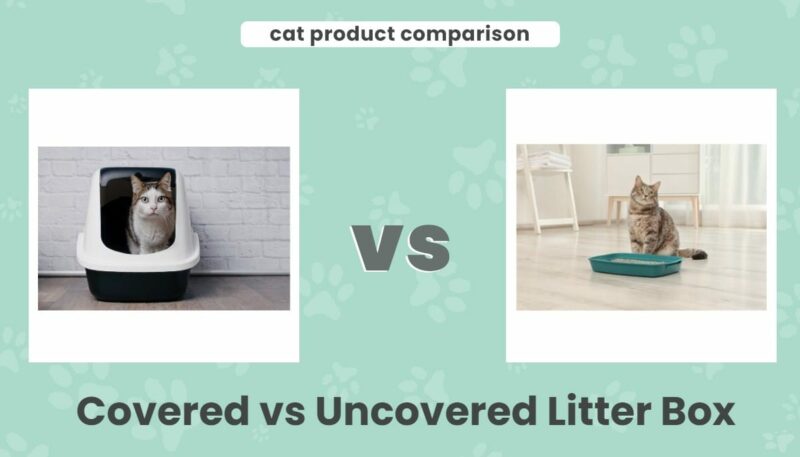Snuggling with a purring cat can be one of the most relaxing experiences. Unfortunately, opening your home to a cat also means tolerating the presence of at least one litter box. If you’re considering a new litter box or getting your house ready for your first cat (congratulations!), you might have questions about which type of box is best for you.
While the styles and sizes vary, most litter boxes can be broken down into two categories: covered or uncovered. In this article, we’ll compare the two types of litter boxes side-by-side to help you decide which to pick.
Overview of Covered Litter Boxes:
Styles of Covered Box
Covered litter box styles range from simple pans with a lid to elaborate furniture pieces designed to hide a full litter box from view and give you somewhere to set your evening wine glass. They may have an opening in the top or front, and some include a door flap. Most are rectangular, but some are designed to fit into a corner.
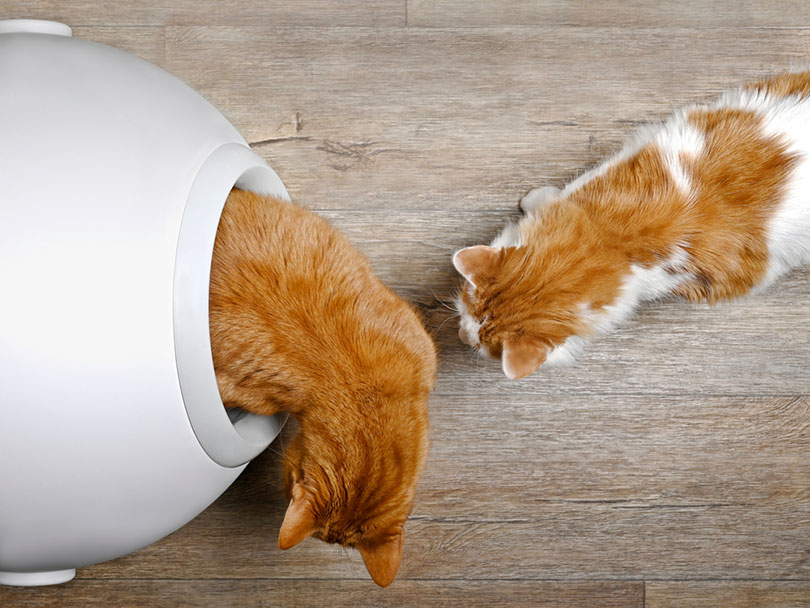
Why Choose a Covered Litter Box?
People often choose covered litter boxes because they’re trying to minimize the mess and smell associated with them. Sometimes, they’re also trying to keep it out of sight.
Price of Covered Litter Boxes
Overall, covered litter boxes are more expensive than uncovered ones. That is especially true for the hideaway furniture options. Inexpensive covered litter boxes can suffer in quality, often with messy results.
Ease of Cleaning
Unless you get a self-cleaning covered litter box, you’ll have at least one extra step involved in cleaning a covered litter box: removing the cover. Once that’s completed, there’s not much difference between scooping the two types of boxes.
Cats that don’t squat completely while peeing may spray the seam of the covered box and cause a mess outside the box. Waste sometimes gets caked into the corners of a covered box as well, making it a bit tougher to clean.
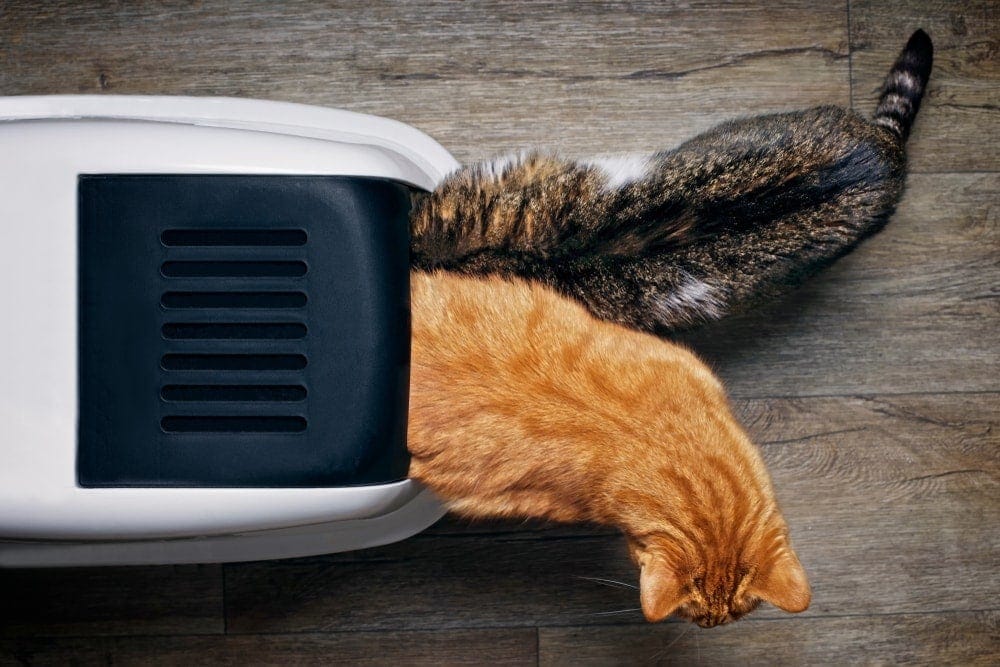
Will My Cat Use a Covered Litter Box?
It’s hard to predict how your cat will react to a covered litter box. If they’ve never used one before, they may not like peeing in an enclosed space. Cats that are constantly on the lookout for other pets may fear being trapped in the covered litter box and avoid it.
Huge breeds can struggle to fit into many covered cat boxes. Conversely, your cat may feel more secure in the covered box and refuse to use more open locations.
- Helps control odor and litter mess
- More visually appealing
- Some cats may feel more secure
- Generally more expensive
- It may be harder to clean
- The cat may refuse to use it
 Overview of Uncovered Litter Boxes:
Overview of Uncovered Litter Boxes:
Styles of Uncovered Litter Boxes
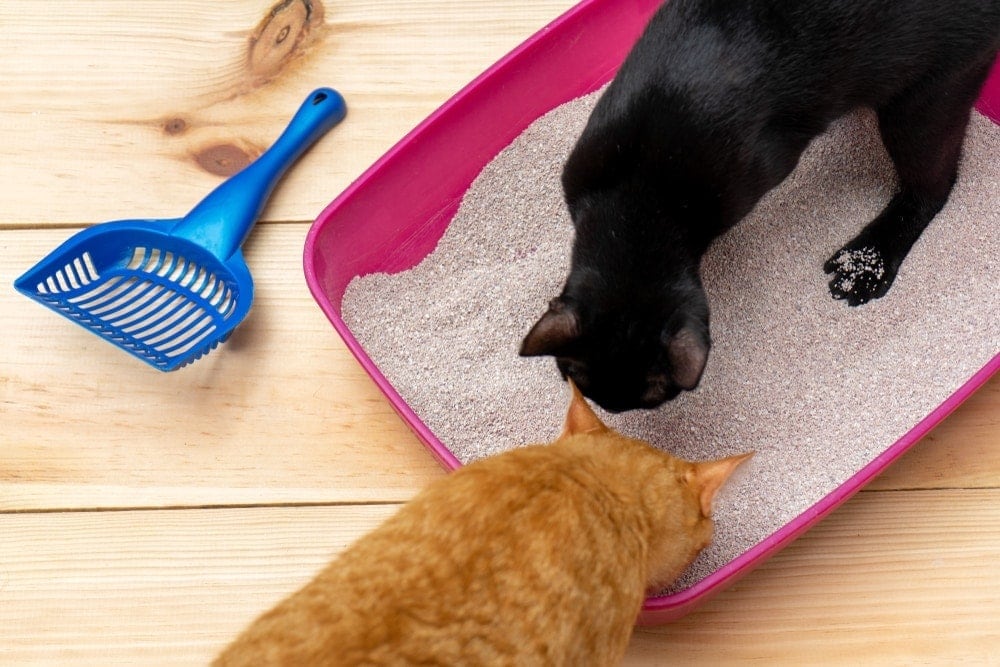
Uncovered litter boxes are generally rectangular, plastic pans. They are available in various sizes. Some come with extra-high sides to keep litter and urine contained. Disposable litter boxes are also available and are designed to be tossed instead of cleaned. Triangular boxes manufactured to slide neatly into corners are another style of the uncovered litter box.
Why Choose an Uncovered Litter Box?
As we mentioned, some cats won’t use a covered box, and you’ll automatically need to use an uncovered one. You may also select an uncovered box because they are cheaper, easier to clean, or sturdier than covered models.
Price of Uncovered Litter Boxes
The cheapest litter boxes available are generally uncovered. More specialized boxes, such as those with extra-high sides, will cost more. Disposable containers are affordable but don’t last very long, depending on how many cats you have.
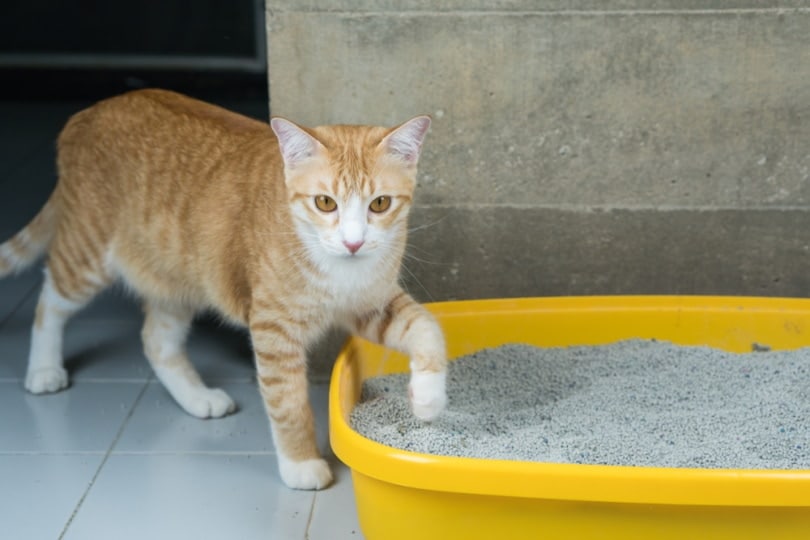
Ease of Cleaning
Uncovered boxes provide easy access for scooping. Depending on how high the sides are, you may be sweeping or vacuuming up litter daily. Like covered boxes, some uncovered ones also have hard-to-clean corners. Your cat may also spill urine or poop outside the box if the sides aren’t high enough.
Will My Cat Use an Uncovered Litter Box?
Unless your cat has a litter box aversion for some reason or has only used covered boxes, they should have no issue using the uncovered box.
- Generally cheaper
- Easier to clean
- Some cats may prefer them
- High walls and corner boxes available
- Less effective at containing mess and smell
- Harder to hide that you have a litter box
 Other Factors to Consider
Other Factors to Consider
Some other factors to consider when comparing covered versus uncovered litter boxes are the size of your cats and how many you have. Vets recommend having enough litter boxes for every cat in the house, plus one extra. Do you have the space for all those boxes if you choose taller, covered litter boxes? Do you have the budget to buy multiple covered boxes rather than cheaper, uncovered ones?
Large breeds like Maine Coons may not fit well in a covered box. Even if they feel comfortable using it, they’re more likely to make a mess because part of their bodies may hang over the edges.
Does the Box Require Special Litter?
Some self-cleaning litter boxes (most of which are covered) require special litter. Self-cleaning litter systems or disposable boxes, which may be uncovered, also need a specific type. If these aren’t readily available, cleaning the litter box could be more expensive and less convenient.
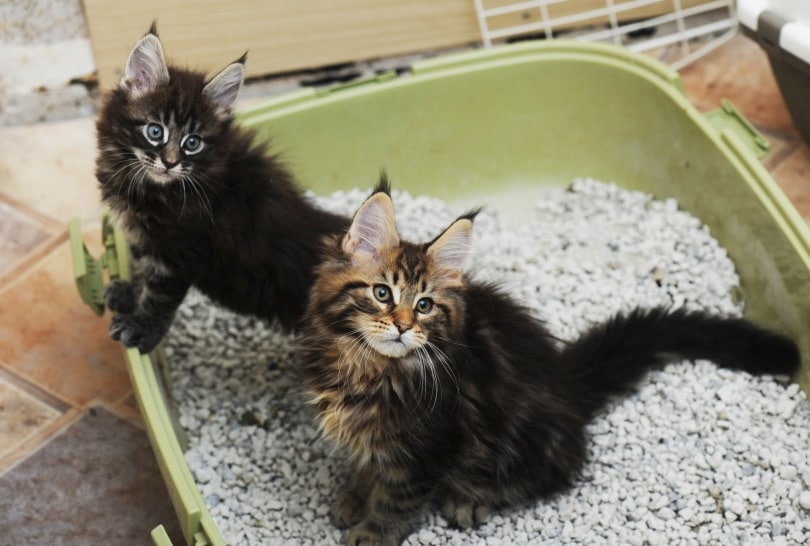
How to Encourage Your Cat to Use a New Litter Box
If you’ve decided to switch from one type of litter box to the other, here are some tips to make it easier.
Ensure the new box is still in the same spot as the old one. Use the same litter and avoid any unfamiliar litter deodorizers or cleaners. You may want to place potty pads around the new litter box to make your life easier. It will be easier to clean should your cat rebel and poop or pee outside the box.
Consider using an attractant or catnip to lure your cat to the new box. You could also stoop to bribery by offering treats when you catch your cat interacting with the new box, whether or not they use it. The reward should help your cat form positive associations and encourage them to pee in the right spot.
Help! My Cat Won’t Use the Litter Box
If your kitty won’t use the new litter box or suddenly starts peeing inappropriately around the house, the first step is to rule out any medical condition like bladder stones or an infection. Once the vet gives your cat a clean bill of health, it’s time for a psychological assessment.
Does the new litter box bother your cat? Has some other stressful situation (new baby, new neighbor, home renovation) occurred that could be causing the potty problems? It doesn’t always take introducing a new cat for this to happen. Some other shift in your cats’ relationship or their time with you could trigger a power struggle.
To help, ensure you have enough litter boxes for all your cats, placed in locations throughout the house, at least one on each floor. Consider making a safe space for your cats, with food, water, toys, litter, and a bed all in one room so they can hide if they feel the need.
Ask your vet about behavior modification medication or pheromone sprays and plug-ins. Inappropriate urination can be a puzzling riddle to solve, often resulting in cats being rehomed out of frustration.
 Conclusion
Conclusion
As you can see, covered and uncovered litter boxes have strengths and weaknesses. If money and space aren’t a consideration, your choice may come down to your cat’s preference. If you have more than one cat, you might consider keeping both kinds of litter boxes around until you learn their preferences. Try to keep the litter box disruption minimal to avoid stressing your cat.
Featured Image Credit: (L) Lightspruch, Shutterstock | (R) New Africa, Shutterstock
Contents
- Overview of Covered Litter Boxes:
- Overview of Uncovered Litter Boxes:
- Styles of Uncovered Litter Boxes
- Why Choose an Uncovered Litter Box?
- Will My Cat Use an Uncovered Litter Box?
- Other Factors to Consider
- Does the Box Require Special Litter?
- How to Encourage Your Cat to Use a New Litter Box
- Help! My Cat Won’t Use the Litter Box
- Conclusion


